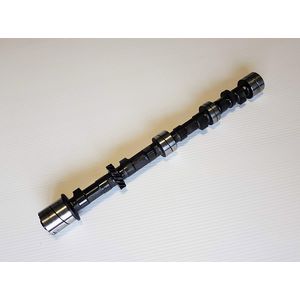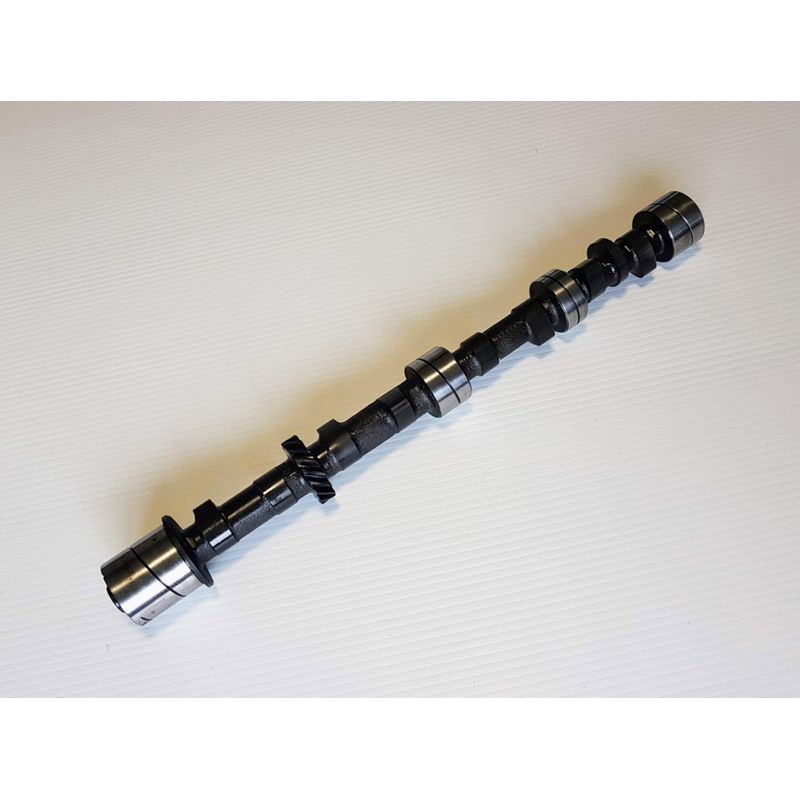- Part Detail
- CLICK TO VIEW
TRIUMPH PLATES - Browse Original Triumph Catalogue Plates
CAMSHAFT RACE CHILLED IRON NEW

Part No:
RTR1060K
Price
£478.80
Price Ex VAT @ 20%
£399.00
IN STOCK This part is immediately available
TR2-4A and Italia; new Race Camshaft with inlet timing 47°-73° and exhaust timing 83°-37° giving 300° overlap. see also RTR1060X
With a cam lift of 0.324" this cam produces up to 150 BHP at the rear wheels although this figure depends hugely on the cubic capacity of the engine and the quality of the engine build.
New blanks of sufficiently high quality are currently very difficult to find therefore an exchange camshaft RTR1060EXK may need to be supplied.
When installing a camshaft, to avoid excessive and premature lobe wear it is important to use valve springs which provide the correct seat pressure. We recommend standard spring pressure, certainly no more unless you are consistently revving to 7000RPM!
Only just enough spring pressure is required to ensure the valve stays closed when it should be, without valve bounce. Any more is too much and will put unnecessary load on the camshaft lobes, possibly resulting in premature lobe failure.
When choosing valve springs it is also important to check that the extra lift of our performance camshafts does not result in coil binding on full lift. This should be checked (even with standard camshafts) with the head and the valve gear assembled and valve clearance correctly set. It should be possible to leaver down the valve by an extra 3mm for safety with the valve at full lift.
Please see the appropriate catalogue section for a range of suitable springs.
New camshaft followers (tappets) should always be fitted with a new, exchange or second hand camshaft as the under face of the follower develops a wear pattern particular to the lobe it has been running with. If a used follower is fitted with a lobe it has not operated with before (even another lobe on the same camshaft) then rapid wear will ensue; order 8 off RTR1024 followers.
Camshaft installation paste should be used to protect the lobes when the engine is started for the first time.
Our new camshafts are ground onto chilled iron blanks which have a 5mm deep hard surface before machining. Chilled iron was the material used to produce Triumphs original camshafts and is commonly in use today by market leading camshaft produces. This method ensures the camshaft is hard where required but maintains some flexibility in the core of the camshaft.
New blanks of sufficiently high quality are currently very difficult to find therefore an exchange camshaft RTR1060EXK may need to be supplied.
When installing a camshaft, to avoid excessive and premature lobe wear it is important to use valve springs which provide the correct seat pressure. We recommend standard spring pressure, certainly no more unless you are consistently revving to 7000RPM!
Only just enough spring pressure is required to ensure the valve stays closed when it should be, without valve bounce. Any more is too much and will put unnecessary load on the camshaft lobes, possibly resulting in premature lobe failure.
When choosing valve springs it is also important to check that the extra lift of our performance camshafts does not result in coil binding on full lift. This should be checked (even with standard camshafts) with the head and the valve gear assembled and valve clearance correctly set. It should be possible to leaver down the valve by an extra 3mm for safety with the valve at full lift.
Please see the appropriate catalogue section for a range of suitable springs.
New camshaft followers (tappets) should always be fitted with a new, exchange or second hand camshaft as the under face of the follower develops a wear pattern particular to the lobe it has been running with. If a used follower is fitted with a lobe it has not operated with before (even another lobe on the same camshaft) then rapid wear will ensue; order 8 off RTR1024 followers.
Camshaft installation paste should be used to protect the lobes when the engine is started for the first time.
Our new camshafts are ground onto chilled iron blanks which have a 5mm deep hard surface before machining. Chilled iron was the material used to produce Triumphs original camshafts and is commonly in use today by market leading camshaft produces. This method ensures the camshaft is hard where required but maintains some flexibility in the core of the camshaft.
















